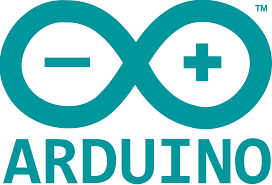A comprehensive guide to Arduino programming
Arduino is an open-source electronics platform for creating interactive projects and prototypes. It uses microcontrollers to read inputs and control outputs. From its inception in 2005, Arduino has grown into a diverse ecosystem supporting various boards and a thriving community. More you can read about this here.
Getting started with Arduino IDE
Arduino IDE is very user-friendly and easy to use. You can install the Arduino IDE for code editing, compiling, and uploading to your board.
This is a kickstart for your journey in Arduino programming.
Basic concepts
Starting with the basic concept of Arduino programming, you can learn to control an LED’s on-off state, a fundamental concept in Arduino. This will help you to understand how digital pins work as outputs to control LEDs and other devices.
Data types, variables, and constants in Arduino
With its freedom to declare data types, variables, and constants of your choice, Arduino is very impactful for its work.
Functions in Arduino programming
Arduino is a very general user-friendly IDE. It lets you perform different tasks by providing you with an approach that allows you to create functions for each task. This makes it easier for the user to integrate multiple tasks into one program.
Control Structures
Conditional Statements (if, else, if, else) are the fundamental structures. They allow you to make decisions in your code using if-else statements based on conditions. It helps you to handle multiple conditions using switch-case, streamlining decision-making.
Looping Structures
Arduino programming allows you to use your code efficiently using loops. It efficiently repeats code using different loop types: for, while, and do-while.
Operators in Arduino
By using Arithmetic operators, you can perform mathematical operations and assign values using operators.
The operators include:
Addition operator
Subtraction operator
Multiplication operator
Division operator
Square operator
Square root operator
Modulo operator
Power operator
Absolute operator
Minimum and Maximum operator
Boolean Operators let you combine conditions with logical operators to control program flow. The operators include:
AND
OR
NOT
Bitwise Operators allow you to manipulate individual bits using bitwise operations. The operators include:
Bitwise AND
Bitwise OR
Bitwise XOR
Bitwise Shifts (left and right)
Interfacing components
Interfacing LCD (Liquid Crystal Display) lets you connect and display information on an LCD screen.
Interfacing HC-SR04 Ultrasonic Distance Sensor helps you to measure distances using this sensor and apply it in obstacle detection.
Interfacing DC Motor allows you to control the direction and speed of a DC motor using Arduino.
Home Automation Project
Home Automation using the Bluetooth module gives you Smartphone Control. It enables remote control of the automation system using a smartphone app.
Conclusion
By progressing through this guide, you’ll gain a solid foundation in Arduino programming, from basic concepts to practical applications like interfacing with components and creating a home automation project. Each topic builds upon the previous ones, giving you a comprehensive understanding of Arduino programming and its real-world applications.
Free Resources
